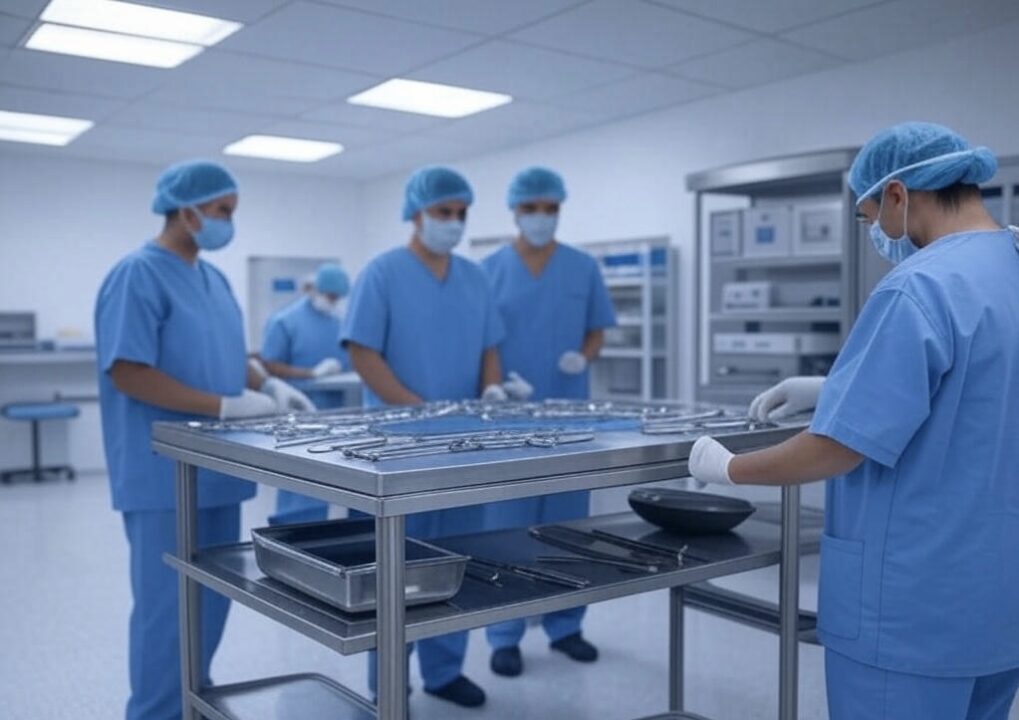Sterilization of medical equipment is one of the most critical steps in ensuring patient safety and maintaining excellence in healthcare. By eliminating harmful microorganisms such as bacteria, viruses, and spores, proper sterilization helps prevent the spread of infections and protects both patients and healthcare providers.
For healthcare professionals, hospital administrators, and anyone involved in medical care, understanding the importance of sterilization isn’t just beneficial; it’s essential. This blog will explore why sterilization is vital and provide insights into effective practices to ensure a sterile healthcare environment.
Sterilization Prevents Healthcare-Associated Infections (HAIs)
Healthcare-associated infections (HAIs) are infections acquired during a patient’s stay in a hospital or healthcare facility. According to the CDC, 1 in 31 hospital patients has at least one HAI on any given day in the United States.
Sterilization significantly reduces the risk of HAIs by ensuring all medical instruments and devices are free of pathogens. Without proper sterilization, microorganisms on medical tools can cause serious complications, prolong hospital stays, and even contribute to preventable fatalities.
Examples of HAIs:
- Surgical Site Infections (SSI): Contaminated surgical instruments increase the risk of introducing pathogens into the body during a procedure.
- Central Line-Associated Bloodstream Infection (CLABSI): Improperly sterilized catheters can lead to bloodstream infections.
- Ventilator-Associated Pneumonia (VAP): Equipment used in respiratory support can become a reservoir for bacteria if not sterilized.
Protecting Patients by Preventing Cross-Contamination
Cross-contamination occurs when an infectious agent is unintentionally transferred between patients, healthcare workers, or surfaces. Proper sterilization prevents this by ensuring that instruments used on one patient do not carry harmful microorganisms to another.
For example, tools like scalpels, endoscopes, and biopsy forceps need to be completely sterile when coming into contact with sterile tissues or mucous membranes. Even a single lapse in sterilization can result in widespread contamination within a medical facility.
Fighting “Superbugs” and Drug-Resistant Bacteria
The rise of antibiotic-resistant bacteria, commonly known as “superbugs,” poses a significant challenge to global healthcare. Proper sterilization plays a crucial role in curbing their spread by eliminating pathogens from medical environments before they have a chance to adapt or grow resistant.
Superbugs such as Methicillin-resistant Staphylococcus aureus (MRSA) and Clostridioides difficile (C. diff) thrive in healthcare settings with poor infection control, making sterilization essential in the fight against these dangerous microorganisms.
Comprehensive Safety for Healthcare Workers
Healthcare workers are at constant risk of exposure to infectious materials such as bloodborne pathogens and harmful microorganisms. Properly sterilized equipment minimizes these occupational hazards by reducing the likelihood of accidental exposure during procedures or routine tasks.
Protecting staff isn’t just an ethical imperative; it also ensures the workforce remains healthy and capable of delivering care to patients.
Maintaining Compliance With Regulatory Standards
Organizations like the CDC, WHO, and EPA provide strict guidelines for ensuring healthcare quality, including sterilization processes. Adhering to these standards is essential not only for patient safety but also to maintain compliance and avoid the legal and financial consequences of negligence.
Regulations often require routine audits and monitoring of sterilization procedures, using mechanical, chemical, and biological indicators to validate effectiveness.
Understanding Sterilization Methods
Not all sterilization methods are alike. Each has its strengths and is suitable for specific materials or equipment.
Here’s a breakdown of the most common sterilization techniques used in healthcare:
Heat Sterilization
- Autoclaving: High-pressure steam effectively removes all pathogens, including spores. Ideal for surgical tools and heat-resistant materials.
- Dry Heat: Used for items sensitive to moisture but tolerant to high heat, such as glassware or metal instruments.
Chemical Sterilization
- Ethylene Oxide (EO): A gas method used for heat- and humidity-sensitive equipment, such as flexible endoscopes.
- Hydrogen Peroxide Gas Plasma: Effective for eliminating a wide range of pathogens without damaging delicate devices.
Radiation
- Gamma Radiation and X-rays: Primarily used for single-use medical items, such as syringes and implants.
Ozone Sterilization
- A newer method that uses oxygen to kill pathogens, offering an eco-friendly alternative to chemical sterilization.
Cleaning Precedes Sterilization
Sterilization isn’t effective unless proper cleaning comes first. Organic debris, such as blood, tissue, or mucus, must be removed from instruments to ensure the sterilization process reaches all surfaces.
Failure to adequately clean equipment can act as a barrier, allowing biofilms to form and protect microorganisms from the sterilization process.
The Risks of Insufficient Sterilization
The consequences of inadequate sterilization can be catastrophic for any healthcare facility. Without rigorous adherence to sterilization protocols:
- Pathogens may remain on critical items.
- The likelihood of HAIs increases exponentially.
- Patients face preventable complications.
- Legal repercussions and reputational damage can threaten the institution.
PKT Sterilization Services Can Make the Difference
Overwhelmed by the complexities of sterilization? That’s where PKT comes in. We specialize in ensuring your perioperative and sterile processing departments are performing at their absolute best. From deep cleaning surgical tables to employing proprietary iHP disinfection services with 6-log efficacy, PKT goes the extra mile to eliminate hidden bioburden.
Our top-tier sterilization services include:
- Surgical Table Deep Cleaning and Disinfection
- Sterilizer Cleaning Services
- OR Rolling Stock Cleaning and Maintenance
- Decontamination Equipment Deep Cleaning and Disinfection
- Total Department Disinfection
When the stakes are highest, PKT provides solutions you can trust. Get a personalized quote today!
The Final Word on Medical Equipment Sterilization
Sterilization is more than a best practice; it’s an absolute necessity for ensuring patient safety and upholding healthcare excellence. Beyond the prevention of infections, it helps protect staff, combat superbugs, and meet stringent healthcare regulations.
Every endoscope, syringe, or scalpel must meet the highest standards of cleanliness before coming into contact with a patient. By leaning into the power of modern sterilization methods, healthcare professionals can offer their patients the highest level of care while reducing preventable risks.
Looking to elevate your facility’s sterilization protocols? Contact PKT here. With our specialized services, your commitment to patient safety and infection prevention will remain unmatched.

